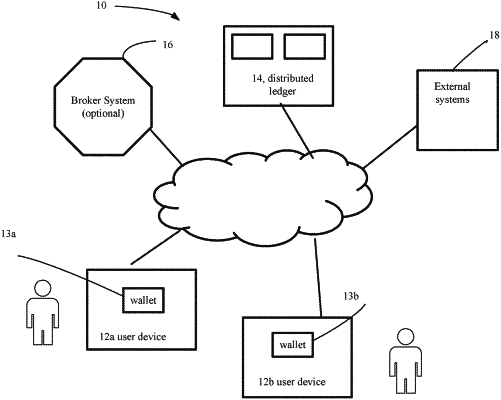| CPC G06F 21/602 (2013.01) [G06F 16/2379 (2019.01); G06F 21/6245 (2013.01); G07C 9/257 (2020.01); G16H 10/60 (2018.01); H04L 9/30 (2013.01); H04L 9/3247 (2013.01)] | 14 Claims |

|
1. An access validation system, comprising:
one or more hardware processors that:
cause a distributed ledger to generate a record data structure regarding a first user, the record data structure comprising an attribute, the attribute being a medical status of the first user, the medical status indicating whether the first user has been tested for immunity to, has been treated for, or has been vaccinated for a medical condition;
update the record data structure periodically responsive to receiving data regarding the first user without a request, the updated record data structure comprising an updated medical status based on the data regarding the first user;
output credential data representing the updated medical status, wherein the credential data indicates a pass status indicating the first user is immune to or has been treated for or vaccinated for the medical condition or indicates a fail status indicating the first user is not immune to or has not been treated for or vaccinated for the medical condition;
determine whether the updated medical status complies with a policy associated with a space based on the credential data;
validate access of the first user into the space based on the credential data indicating the pass status and the updated medical status complying with the policy;
determine a proportion of users with access to the space based on the credential data indicating the pass status associated with each user in the proportion of users, the proportion of users including the first user;
validate access of a second user based on the proportion of users with access to the space crossing a threshold, the second user corresponding to a second updated medical status based on data regarding the second user, the second updated medical status including credential data indicating the fail status;
update the distributed ledger to indicate access was validated based on the updated medical status complying with the policy; and
the distributed ledger outputs the credential data responsive to verifying a request for the credential data based on a private key used to sign the request for the credential data.
|